Welcome back to another installment of This Comic is History where we spotlight those titles that draw from actual historical events and what better comic to look at than the Bitter Root: Red Summer Special! Now for those of you not familiar with this hit series from Image Comics, Bitter Root centers the monster hunting exploits of the Sangerye Family set during the Harlem Renaissance. The series comes from the creative minds and talents of Chuck Brown, David Walker, and Sanford Greene. There’s also a movie adaptation coming that will be directed by Regina King!
The Red Summer Special is an anthology focusing on various members of the family and supporting characters we’ve met so far. However, it’s the title of the book that references a particular dark and ugly part of American history they don’t teach you about in school. As a matter of fact, I didn’t hear about it in detail until well into my college years while reading Captain America: Truth. Just one of several moments in comics where my history was taught to me in stories that were written by people who looked like me rather than the educational institutions I attended.
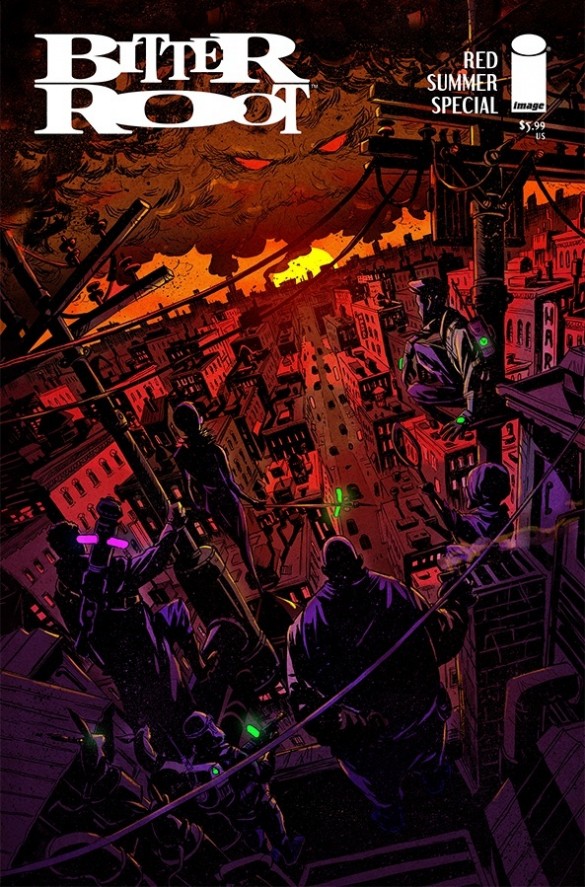
RED SUMMER
It was James Weldon Johnson who coined the term “Red Summer” in an article he wrote while he was a field reporter for the NAACP. Along with being an activist he was also a poet during the Harlem Renaissance era and is responsible for writing what is known as the Negro National Anthem, “Lift Every Voice and Sing”.
For those of us in the know, those bloody and violent months in 1919 bring up unpleasant imagery of lives lost and legacies destroyed. They are also a reminder that those in power erased a portion of our history (again), therefore erasing a part of who we are. The time during the Red Summer claimed hundreds of Black lives as they fought against racially motivated attacks in various cities across America. Violent acts were committed by uniformed servicemen, the Ku Klux Klan, and perhaps the most dangerous, your everyday white citizen who felt the need to do their part to stop “Negro advancement” with mob justice.
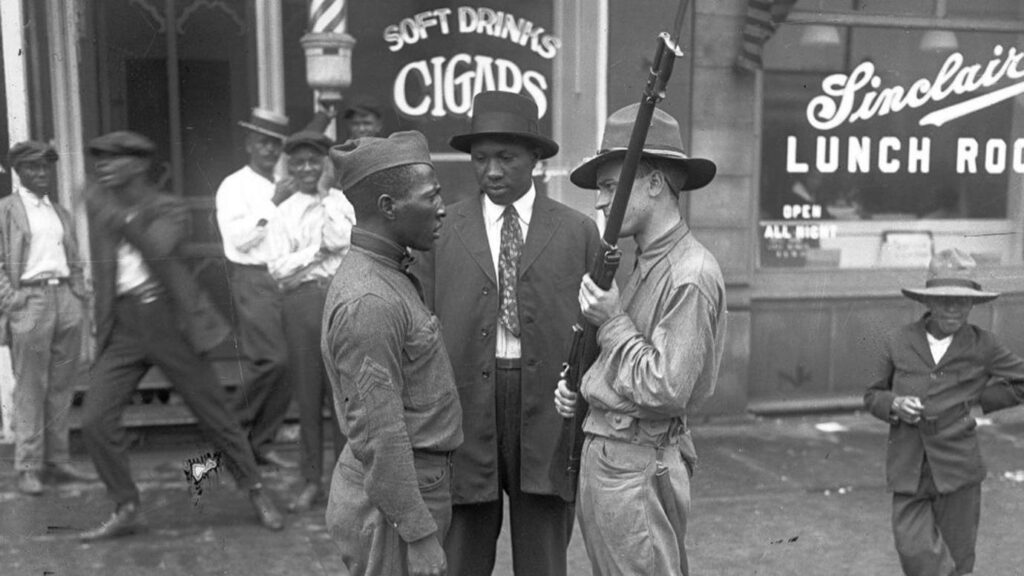
Photo Credit: Chicago Tribune historical photo
The spark that set things off was the death of Eugene Williams on July 27, 1919. A Black teenager who was murdered for drifting across an invisible racial boundary while floating in the water in Lake Michigan. The police refused to arrest the man responsible regardless of eye witness accounts and this led to the start of the Chicago Race Riots. From here, several more attacks on Black communities across the country would take place as white-owned newspapers instigated more violence with false headlines and dog whistles. Black servicemen who had returned home from serving their country overseas during WWI would rise up to protect their families and communities, but the damage that was done would be felt for generations to come.
“I knew it to be true, but it was almost an impossibility for me to realize as a truth that men and women of my race were being mobbed, chased, dragged from street cars, beaten and killed within the shadow of the dome of the Capitol, at the very front door of the White House,”
James Weldon Johnson
There’s more comprehensive information regarding the events of Red Summer out there and it’s highly recommended you take some time and look into it. However, for this particular column we won’t be focusing on more Black trauma perpetuated by white supremacists. Yet on a comic that took one of the most horrific moments in American history and through its lens, a talented creative team wove several inspiring narratives. Each one highlighting a member of the Sangerye family and their fight against the jinoo.
Ma Etta
Matriarchs in Black families have gone by many names. Big Momma, Madea, Momma *insert name here*, and more. They’re the heart and soul of the family who come with stern correction and an unfathomable amount of love. Now the Sangerye family is no different and when we enter that forest in 1805, we meet a young Etta on the run from slave catchers until she and the rest of her group realize there’s something just as evil on their trail. What finally catches up to them is a pack of Jinoo. These monsters who were once human are now physical manifestations of hate and more vile emotions that dwell within people. Once someone has transformed into one of these grotesque monsters their only desire is to destroy everything in their path.

So when they are finally surrounded by the pack of monsters we see Etta bring the fight directly to them to protect the ones she loves. Being that we meet Etta during the Harlem Renaissance in the main series, it was great seeing her younger self cut loose and show that she was about that life before meeting Metellus Sangerye. His timely appearance gives off that “Come with me if you want to live” vibe from Terminator right before he joins the fight along with the mysterious woman known as Moses. For those that know, “Moses” was another name that Harriet Tubman went by so it’s safe to say the creative team dropped a historical easter egg for the readers. However, it would be this meeting between Etta and Metellus that would bring about a new generation of monster hunters and root practitioners into the Sangerye family.

From Bitter Root #4
Art by Sanford Greene
Fathers and Sons
Berg is probably one of my favorite characters in the series ever since this loquacious, mountain of a character appeared. He’s the big cousin with refined tastes, but when the Jinoo start preying on innocents he’s right there in the middle of it all ready to scrap and protect. So it was quite the surprise that this tale of a young Burgess in 1904 shows a much different individual. It’s a story that goes right for the feels as a young Berg is preparing for his first hunt and this skinny kid with a severe speech impediment feels he has something to prove to his father. Having recently lost his mother to a Jinoo attack (made worse that he most likely witnessed it) just adds more to this emotional night that becomes more significant as his father takes him aside to prepare his son but not in the way he suspects.

This is one of those short stories that I didn’t see coming nor expected to affect me so much. As it is, there’s very little good Black father/son representation in comics that isn’t some heavy handed cliché. So seeing this was refreshing and at the same time quite telling on how emotional interactions like this aren’t normalized for us in this medium. However, that’s a conversation for another time. The talk they have leads Berg’s father to see that his son might benefit from another aspect of training and introduces him to their vast library opening him up to countless works of literature. Now, if you’ll allow me to get a bit personal, I’ve never identified with a comic character more than young Berg here. Growing up with a severe speech impediment myself everything here hits pretty accurate. Just substitute “learning to fight Jinoo” for “learning martial arts” and that’s pretty much me. However, like Berg, it was being introduced and encouraged to dive into literary works that a new world opened up for me. Expanding his mind and vocabulary which led to transforming him into the man he was destined to be. This, along with Berg’s father speaking almost verbatim the words my own mother said to me, solidified my connection to this one. So a huge thanks to Chuck Brown and David Walker for introducing young Berg to us and revealing what led to the sesquipedalian individual we meet in Bitter Root #1.

Art by Sanford Greene
Chicago and Tulsa
The following stories take place during two horrific times in American history: the Chicago Race Riots (mentioned earlier) and the Tulsa Race Massacre. It’s Ford Sangerye’s story we get to see during that fateful day in Chicago and what started him on his path of becoming the black sheep of the family. It was on that day the violence and hate escalated so much that the Jinoo transformations were like none the family had seen before. As that day fractured an already broken nation, it did the same to the Sangeryes as well. With the loss of family and people pushed past their limits, we see why Ford’s scars run deeper than the ones he received in Chicago.
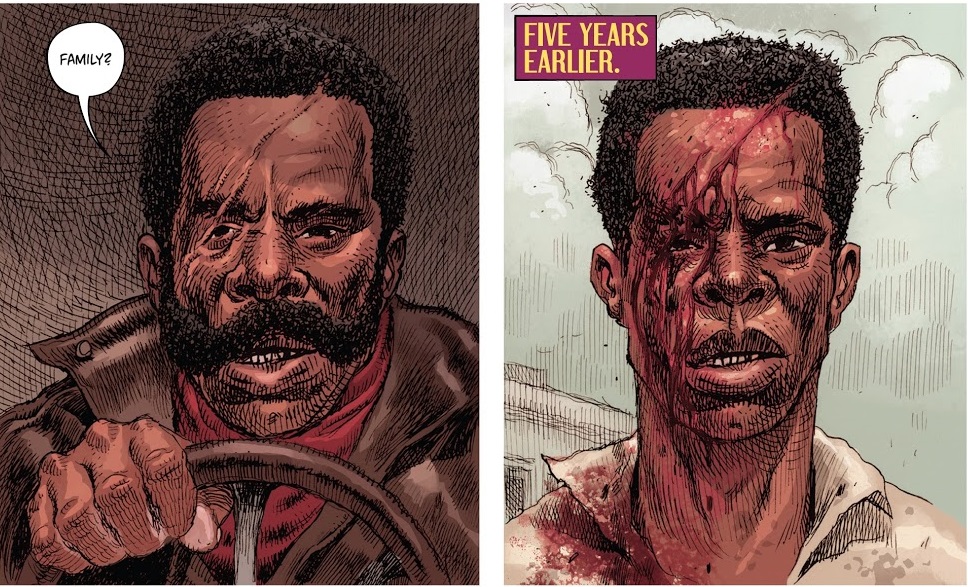
Art by Daniel Lish
I guess it only makes sense that the following story would take place during what’s been touted as one of the worst incidents of racial violence in our history. May 31, 1921 is the day the Tulsa Race Massacre began and tens of thousands of Black lives were irrecoverably destroyed. The events of the massacre are well documented but unfortunately it is only recently getting the attention it deserved years ago, thanks in part to HBO’s Watchmen series which brought the incident to an even wider audience back in October of 2019. However, this must have been the year this part of history was fated to be the topic of discussion as this book came out in July of that same year.
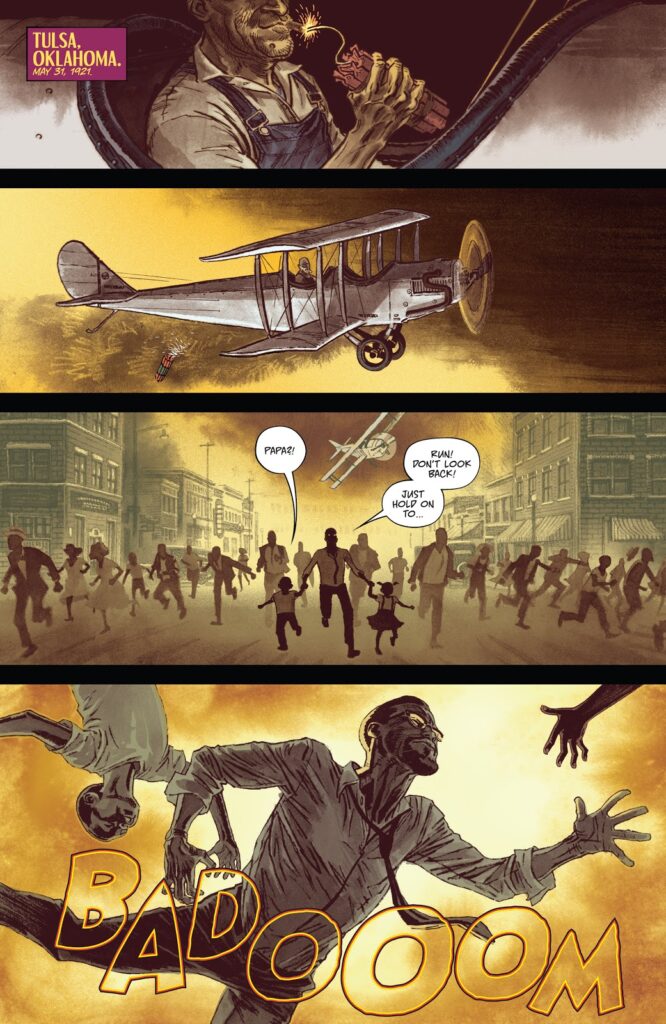
Blood, pain, and chaos ran through the streets of the Greenwood District and at the end of roughly eighteen hours, the second largest Black community and the wealthiest, known as “Black Wall Street,” had been destroyed. Black lives, businesses, legacies, and families all gone. All because white citizens attempted to lynch Dick Rowland. A Black man who was accused of assaulting Sara Page in an elevator. Even so with this moment as the backdrop, we get a painful story of Dr. Sylvester running through the streets during the massacre with his two children as the makeshift bombs are being dropped from planes. It’s during this tragic moment he meets Miss Knightshade who saves him after transforming into her monstrous other form. This story has very little dialogue which is perfect as the art does most of the heavy lifting and captures everything necessary to make this an impactful moment.
Same Monster, Different Name

With “Ladies Night” the focus is on Blink and her friend, Wu. Now Blink is being groomed to take Ma Etta’s place and specialize in roots and curing jinoo if possible. This is a serious point of contention between the two as Blink would rather be on the front lines fighting and leading the charge along with her cousins. She’s more than capable and we see another example of that here. After sneaking out to meet Wu, the two hunt down the monsters in their city. What we also see is that this problem is one faced by the Chinese immigrants as well since Wu is quite familiar with the jinoo or as her family calls them, “guǐzi”. Both of them lament on the fact their families would rather see them do anything else but fight, made more ridiculous when you realize these two grown women who have elite fighting skills had to sneak out of the house to do the same thing the men in their families do. After seeing their skills, all doubts should have been cast aside and each should get the invite to every jinoo/guǐzi hunt. Though this does raise a few questions as we clearly see that Ma Etta was a capable fighter and even in her advanced age she is NOT to be underestimated. It would be sad to see if her pushing Blink to focus more on root work than fighting is due to her falling into the social trappings as far as what her role would be as a woman in the Sangrye family’s fight against jinoo.
Barzakh
The final story in the anthology leaves the evils of our world for those of the supernatural realm of Barzakh: a wasteland that is the barrier between Earth and hell populated by monsters and humans unable to find their way home. Among those trapped happen to be several members of the Sangerye family thought dead.
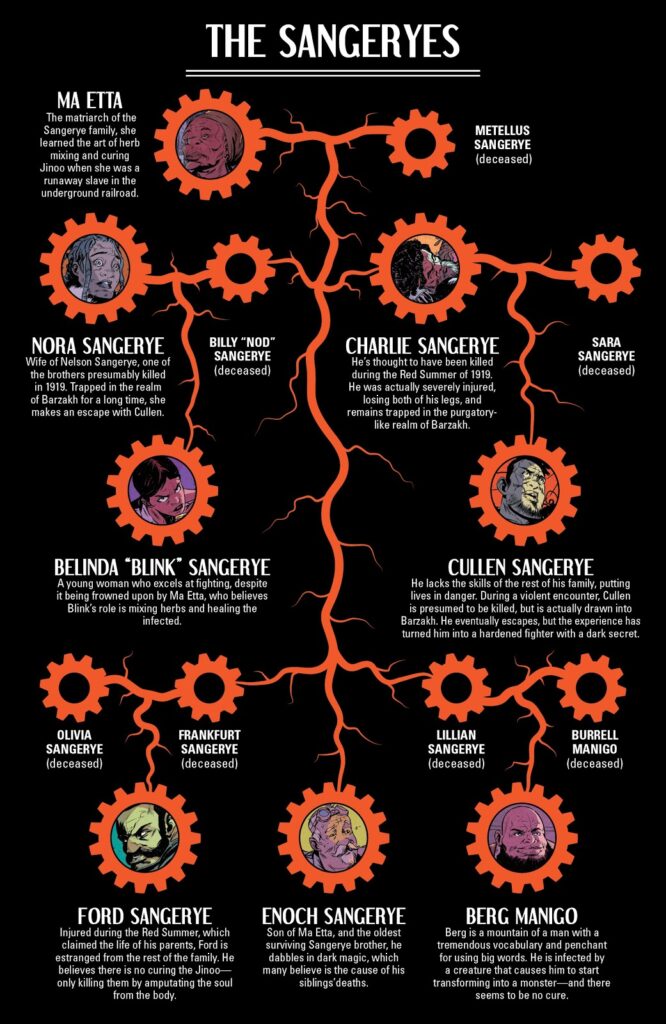
If you’ve never read Bitter Root, The Red Summer Special is still a solid introduction to the world of the monster hunting Sangerye family. However, you’ll want to get into the main series to enjoy the bigger picture and larger cast of characters. Chuck Brown, David Walker, and Sanford Greene didn’t have to come back to this era but it’s important that they did. The Red Summer has been kept in the shadows of history where many events similar to it are placed because America has a difficult time owning up to it’s own atrocities.
For more This Comic is History click here!
Infinite Speech
infinitespeech@comicattack.net


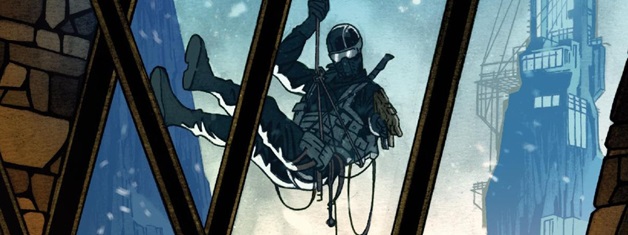
Pingback: This Comic Is History: Captain America: Truth – ComicAttack.net